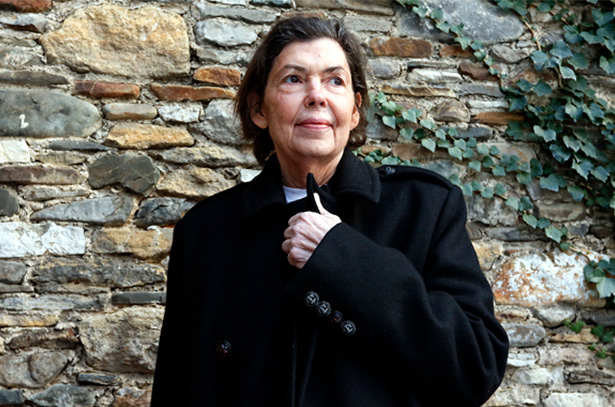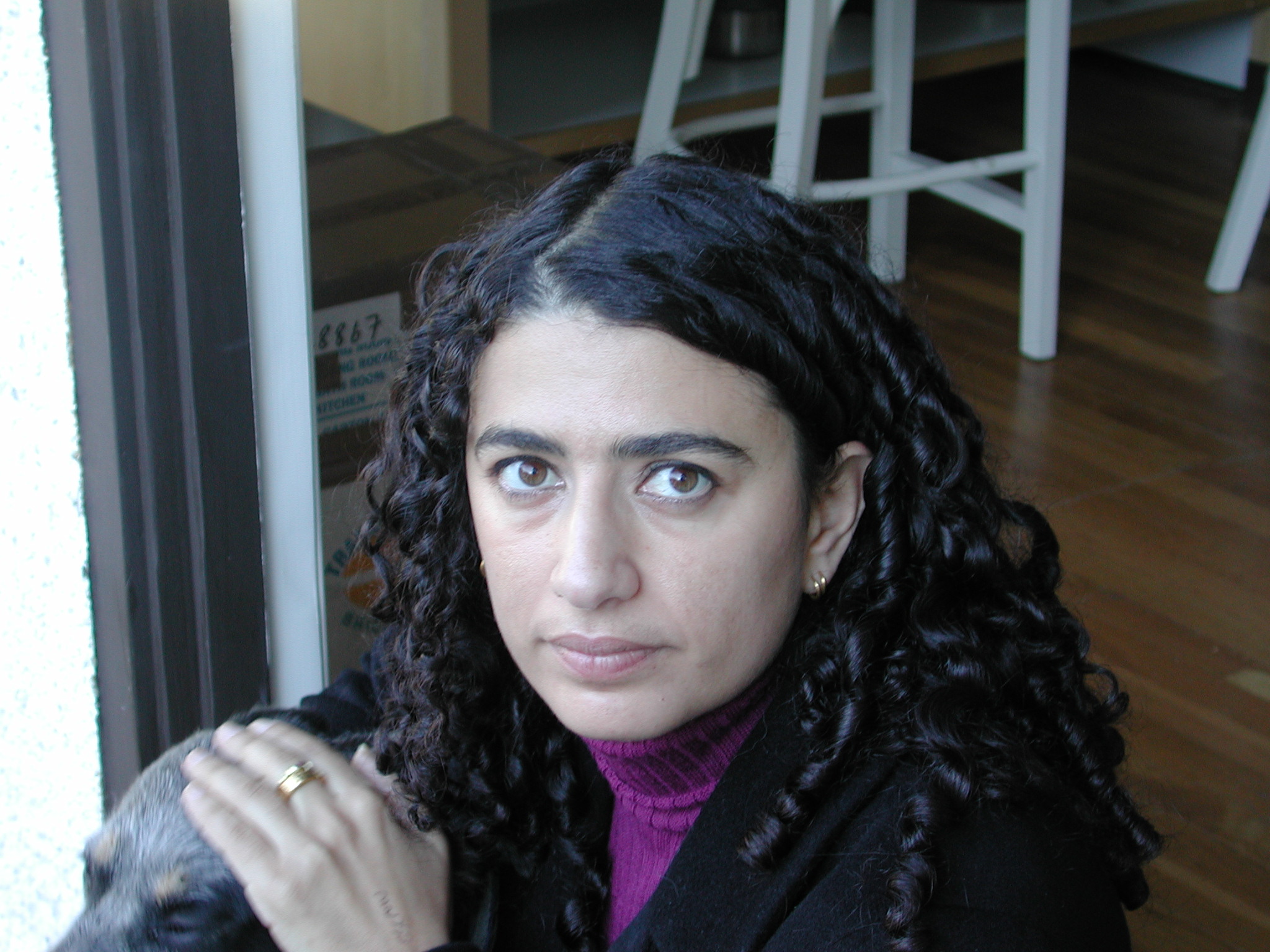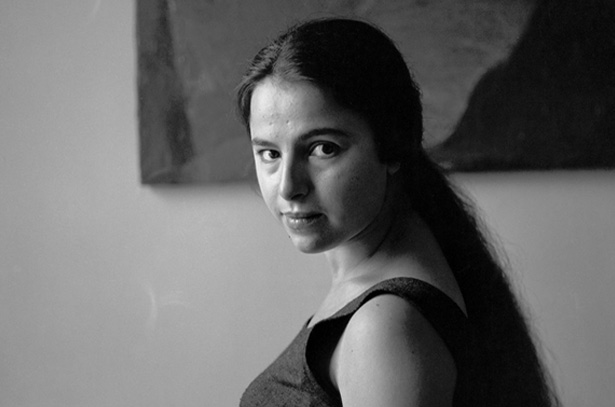
Revolution in the Making:
Abstract Sculpture by Women, 1947 – 2016
13 March - 4 September 2016
Los Angeles
Selected images
Installation views
Related Content
About the Artists

Isa Genzken
Isa Genzken has long been considered one of Germany’s most important and influential contemporary artists. Born in Bad Oldesloe, Germany, Genzken studied at the renowned Kunstakademie Düsseldorf whose faculty at the time included Joseph Beuys, Bernd and Hilla Becher, Benjamin H.D. Buchloh and Gerhard Richter. Since the 1970s, Genzken’s diverse practice has encompassed sculpture, photography, found-object installation, film, drawing and painting. Her work borrows from the aesthetics of Minimalism, punk culture and assemblage art to confront the conditions of human experience in contemporary society and the uneasy social climate of capitalism.Genzken is best known for her sculptures, gaining attention for her minimalist oriented Hyperbolos and Ellipsoids in the late 70s, and architecturally-inflected works such as her recent epoxy resin windows and skyscraper Columns from the 90s. Genzken’s practice is incredibly wide-ranging, but her work remains dedicated to challenging the viewer’s self-awareness by means of physically altering their perceptions, bringing bodies together in spaces and integrating elements of a mixed media into sculpture.
Genzken’s totemic columns, pedestal works and collages combine disparate aspects from her many sources in seemingly nonsensical, yet harmonious sculptural compilations. These sculptures take the form of precariously stacked assemblages of potted plant designer furniture, empty shipping crates and photographs, among other things, arranged with the traditions of modernist sculpture in mind. With this cacophonous array of objects, Genzken undermines the classical notions of sculpture, re-creating the architectural dimensions of her beloved skyscrapers and the riotous colors of the city streets. Devoid of the weightiness and overpowering scale seen in the sculptures of her Minimalist predecessors, her work abandons notions of order and power, allowing the viewer to relate to the works’ inherently human qualities of fragility and vulnerability.
Inspired by the stark severity of modernist architecture and the chaotic energy of the city, Genzken’s work is continuously looking around itself, translating into three-dimensional form the way that art, architecture, design and media affects the experience of urban life, and the divides between public and private. There is an intuitive and consistent manner to Genzken’s work, not only in dramatising aspects of space and scale for the audience, but in creating new dialogues and contact with surfaces of material. The socio-political content is evident and central to her oeuvre.
In 2017, Genzken was awarded the prestigious Goslarer Kaiserring (or Emperor’s Ring) by the city of Goslar, Germany.

Rachel Khedoori
Australia-born, Zurich-based artist Rachel Khedoori poses provocative phenomenological questions in her work that merges installation, sculpture, film and photography. Khedoori gained international recognition with her first comprehensive solo exhibition at Kunsthalle Basel and Kunstverein Braunschweig in 2001.
Khedoori is known for work that reinterprets the architecture of domestic spaces. She often reconstructs rooms that challenge viewers’ perceptual experience by interweaving mirrors, films and scale models into the installation. While the work is noticeably void of any representations of the figure, the viewer’s physical presence assumes the role of subject. Khedoori’s small-scale sculptures are often models, which serve as representations of imagined or hidden spaces. Khedoori’s use of the cinematic apparatus as a sculptural form, for example the 35mm film projector, emphasizes tensions at play within her practice. The work conflates or flattens the space between the physical, built environment and the illusory realm of film, suggesting that the distinction between reality and representation have become obscured. Khedoori also utilizes books, film, and photography to symbolize the act of documentation, encouraging viewers to reconsider the conditions of reportage and representation. Her work serves as a metaphor for the instability of memory and challenges viewers to reconsider the boundary between reality and imagination.

Eva Hesse
Born in Hamburg Germany in 1936, Eva Hesse is one of the icons of American art of the 1960s, her work being a major influence on subsequent generations of artists. Comprehensive solo exhibitions in the past 50 years, as well as a retrospective that toured from the San Francisco Museum of Modern Art to the Museum Wiesbaden in Germany and finally to the Tate Modern in London, have highlighted the lasting interest that her oeuvre has generated. Hesse cultivated mistakes and surprises, precariousness and enigma, to make works that could transcend literal associations. The objects she produced, at times barely present yet powerfully charismatic, came to play a central role in the transformation of contemporary art practice.
In New York in the 1960s, Hesse was one of a group of artists, including Robert Morris, Bruce Nauman, Richard Serra and Robert Smithson, who engaged with materials that were flexible, viscous or soft: latex rubber, plastic, lead, polythene, copper, felt, chicken-wire, dirt, sawdust, paper pulp and glue. Often unstable and subject to alteration, these elements yielded works that were vital in their relativity and mutability. Hesse was aware she produced objects that were ephemeral, but this problem was of less concern to her than the desire to exploit materials with a temporal dimension. Much of the life-affirming power of Hesse’s art derives from this confident embrace of moment. As she stated in an interview with Cindy Nemser for Artforum in 1970, 'Life doesn’t last; art doesn’t last.'

Phyllida Barlow
For almost 60 years, British artist Phyllida Barlow took inspiration from her surroundings to create imposing installations that can be at once menacing and playful. She created large-scale yet anti-monumental sculptures from inexpensive, low-grade materials such as cardboard, fabric, plywood, polystyrene, scrim, plaster and cement. These constructions were often painted in industrial or vibrant colors, the seams of their construction left at times visible, revealing the means of their making.
Barlow’s restless invented forms stretch the limits of mass, volume and height as they block, straddle and balance precariously. The audience is challenged into a new relationship with the sculptural object, the gallery environment and the world beyond.
‘There’s something about walking around sculpture that has the possibility of being reflective, like walking through a landscape,’ Barlow has said. ‘The largeness of sculpture has that infinite possibility to make one engage beyond just the object itself and into other realms of experience.’
Barlow exhibited extensively across institutions internationally and in 2017 represented Britain at the Venice Biennale.

Anna Maria Maiolino
Anna Maria Maiolino is one of the most significant artists working in Brazil today. Born 1942 in Italy, Maiolino’s practice expresses a concern with creative and destructive processes. Working across a wide range of disciplines and mediums—spanning drawing, printmaking, poetry, film, performance, installation and sculpture—Maiolino relentlessly explores notions of subjectivity and self.
Through fragmentation and abstraction, Maiolino’s surfaces are rich with metaphor, alluding to and questioning language, sexuality, desire and the unconscious. The artist’s deeply formative migration from post-war Southern Italy to a politically unstable South America, and her linguistic passage from Italian to Portuguese, engendered an enduring fascination with identity. Maiolino has perfected a dialogue between opposite yet complementary categories in a practice that dissolves dichotomies of inner and outer, self and other. Hers is an art in search of a new language for the liminal realm of daily human existence.
Shadowed by the turmoil and governance of military repression, Maiolino’s early experiments in the 1960s connected her to important movements in Brazilian art history such as New Figuration and New Objectivity. Maiolino took part in the radical reconfiguring of the art object—and thus the art institution and the artist—during this period. Along with Lygia Pape, Lygia Clark, and Hélio Oiticica, Maiolino participated in the 1967 exhibition, ‘New Brazilian Objectivity,’ which symbolized a cultural shift in previous constructivist traditions and established a new vision for the production of art in Brazil.
Since the early 1980s Maiolino has worked with malleable materials that, through her handling, come to bear the imprint of unconscious gestures, daily rituals and sensory expressions of being. Her mark-making is based on the repetition of basic actions that are recorded in the material; her forms the result of this laborious processing of raw material, like the basic bodily functions of eating and defecating. Hers is a work of liberation: abstraction is freed from the more repressed and puritanical precepts of Minimalism and brought back into the service of the active, desiring body.
Current Exhibitions
1 / 12





































